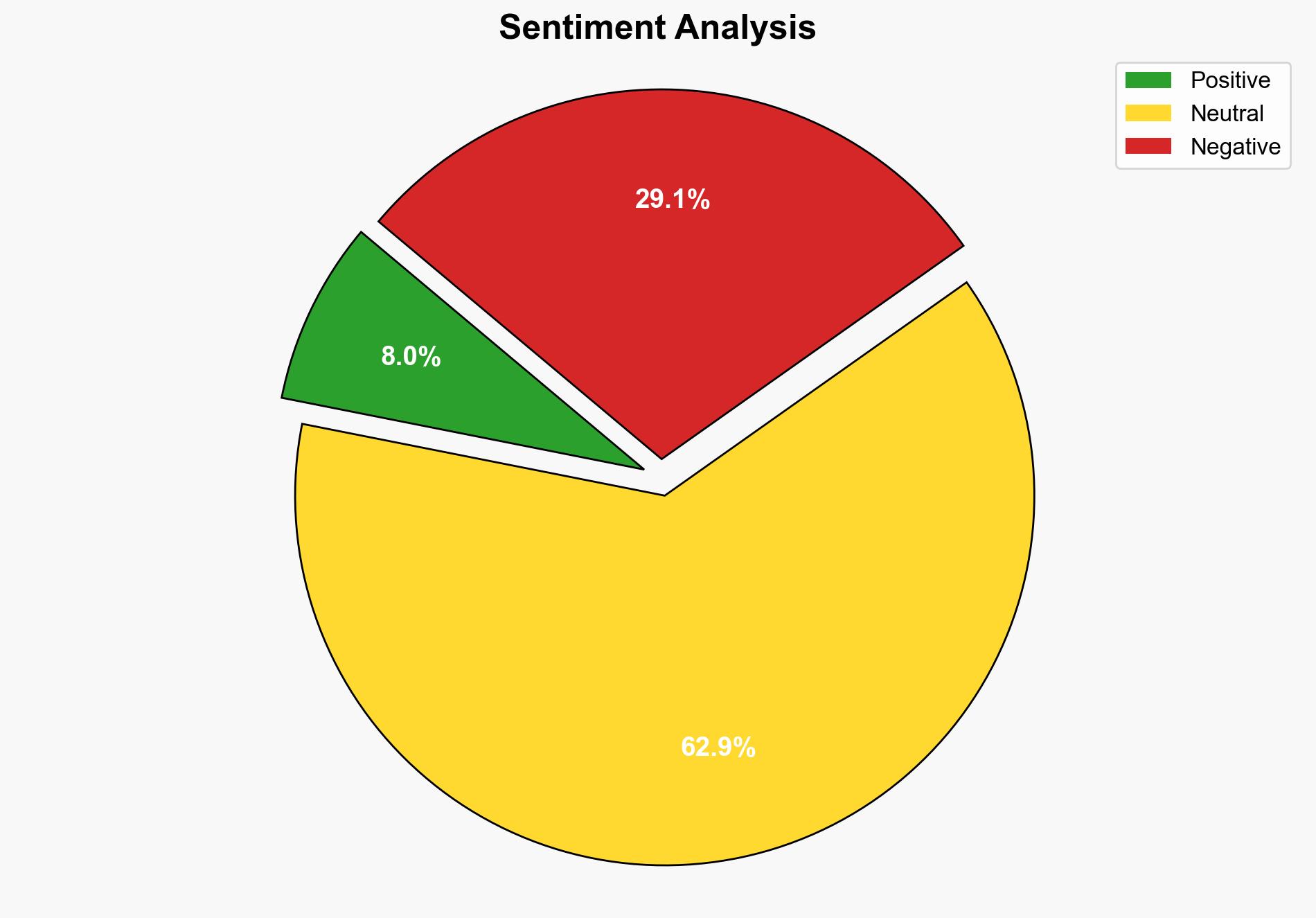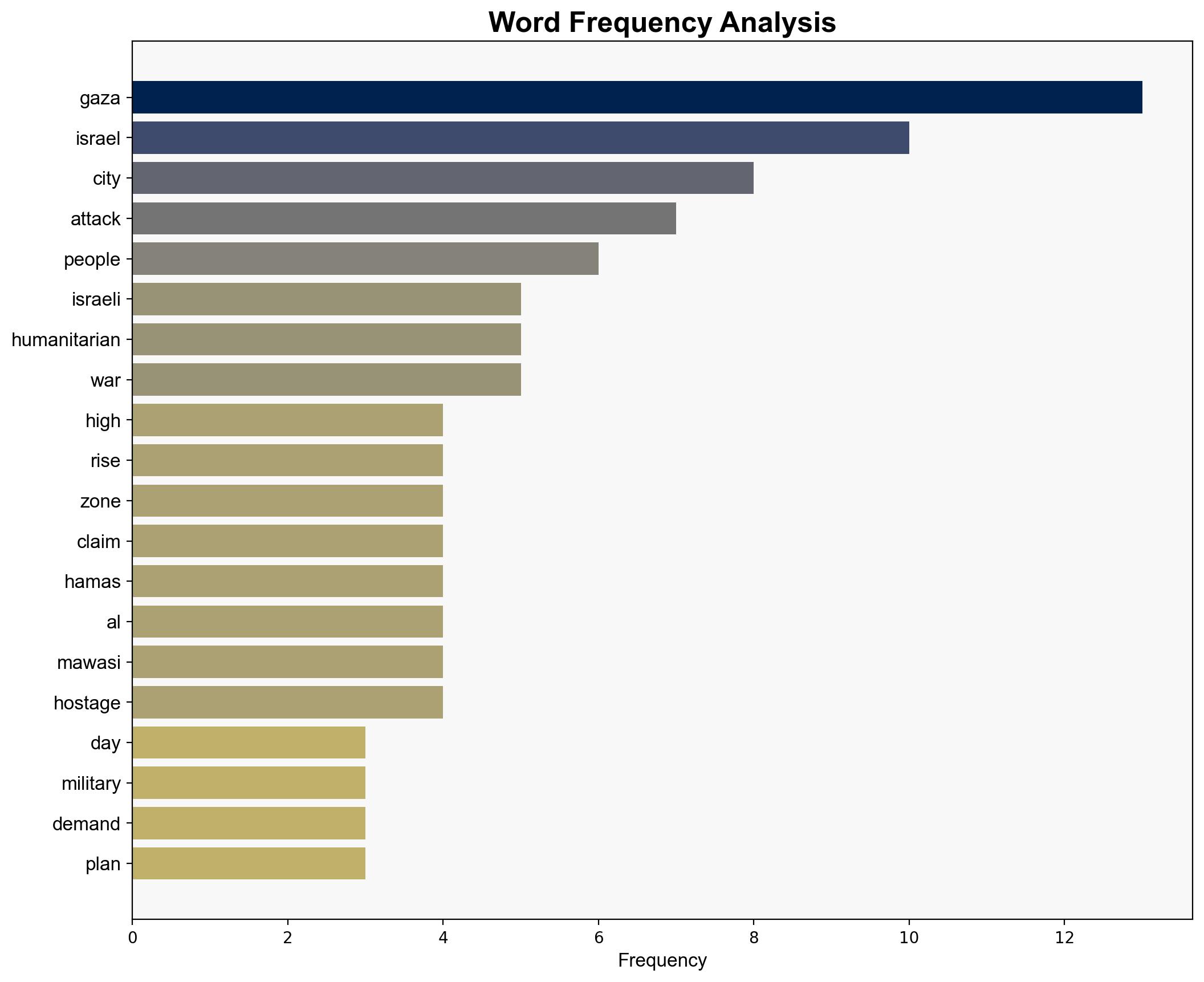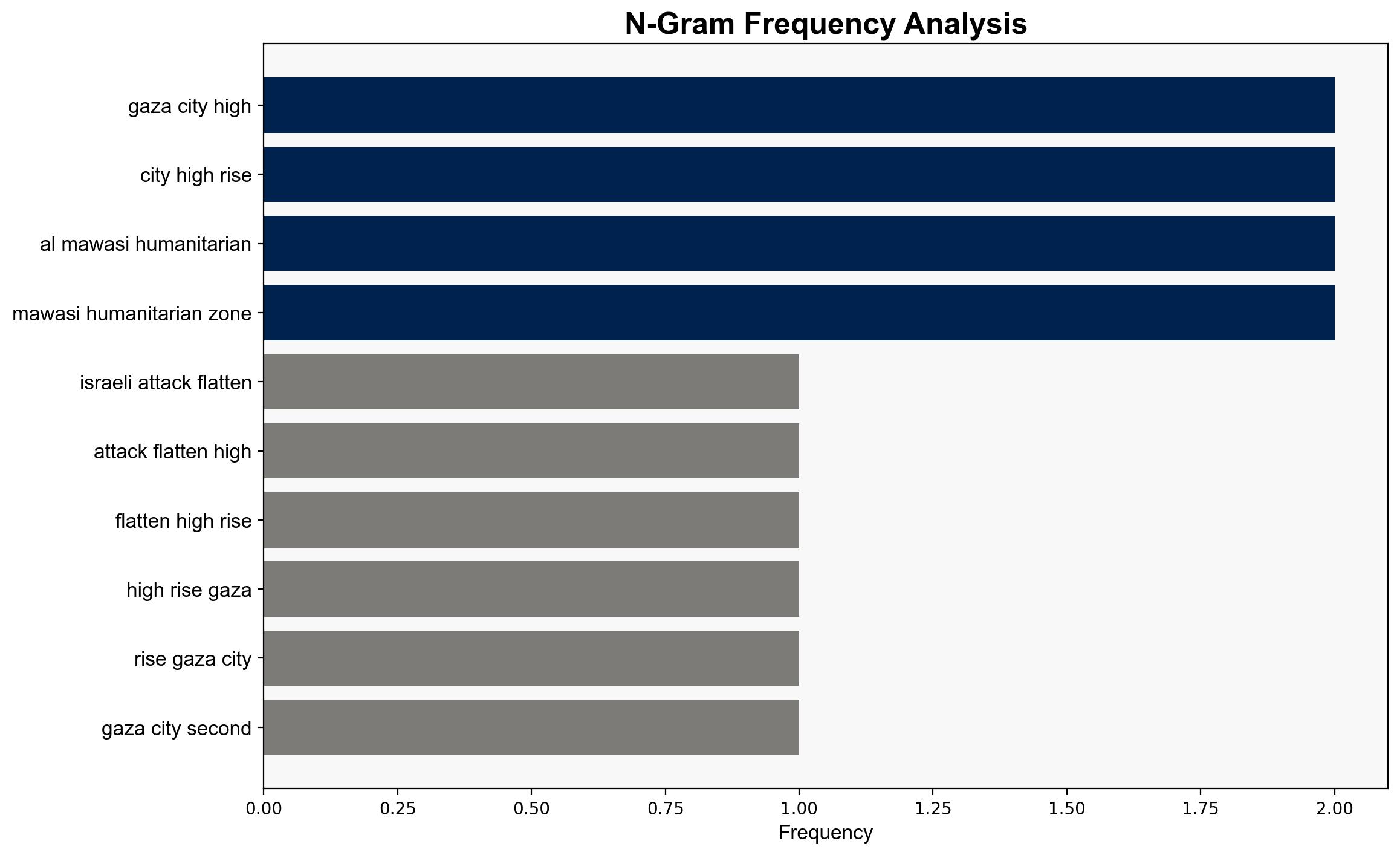Israel demands Gaza city residents leave before offensive – RTE
Published on: 2025-09-06
Intelligence Report: Israel demands Gaza city residents leave before offensive – RTE
1. BLUF (Bottom Line Up Front)
The most supported hypothesis is that Israel’s evacuation demand is a strategic move to minimize civilian casualties and international backlash while preparing for a significant military offensive against Hamas in Gaza City. Confidence level is moderate due to the complexity and fluidity of the situation. Recommended action is to monitor the humanitarian impact and international diplomatic responses closely, while preparing for potential regional escalations.
2. Competing Hypotheses
Hypothesis 1: Israel’s evacuation demand is primarily a humanitarian effort to reduce civilian casualties before a large-scale military offensive against Hamas in Gaza City. This aligns with Israel’s stated intentions and could mitigate international criticism.
Hypothesis 2: The evacuation demand is a tactical maneuver to create chaos and weaken Hamas’s operational capabilities by displacing civilians and disrupting their logistical support networks. This could also serve as a psychological operation to pressure Hamas into negotiations or concessions.
Using ACH 2.0, Hypothesis 1 is better supported by Israel’s public statements and historical patterns of issuing warnings before military actions. However, Hypothesis 2 cannot be ruled out due to the strategic advantages it offers Israel in a protracted conflict.
3. Key Assumptions and Red Flags
Assumptions include the belief that Israel’s intentions are primarily humanitarian and that Hamas will not exploit the evacuation for tactical gains. A red flag is the lack of independent verification of Israel’s claims about Hamas’s use of civilian infrastructure. There is also potential cognitive bias in assuming Israel’s actions are solely humanitarian without considering strategic benefits.
4. Implications and Strategic Risks
If the offensive proceeds, there is a risk of significant civilian casualties and further displacement, exacerbating the humanitarian crisis. This could lead to increased international condemnation and pressure on Israel. Regionally, there is a risk of escalation involving neighboring countries or non-state actors sympathetic to Hamas. Economically, prolonged conflict could impact regional markets and energy supplies.
5. Recommendations and Outlook
- Monitor humanitarian corridors and ensure they remain open to minimize civilian casualties.
- Engage in diplomatic efforts to de-escalate tensions and explore ceasefire possibilities.
- Scenario-based projections:
- Best Case: Successful evacuation and limited military engagement lead to a swift resolution.
- Worst Case: High civilian casualties and regional escalation involving multiple actors.
- Most Likely: Prolonged military engagement with significant humanitarian impact and international diplomatic fallout.
6. Key Individuals and Entities
– Israel Katz (Israeli Defence Minister)
– Avichay Adraee (IDF Spokesman)
– Abdel Nasser Mushtaha (Gaza City Resident)
– Samia Mushtaha (Gaza City Resident)
– Donald Trump (Former U.S. President, mentioned in context of negotiations)
7. Thematic Tags
national security threats, humanitarian crisis, military strategy, regional focus





